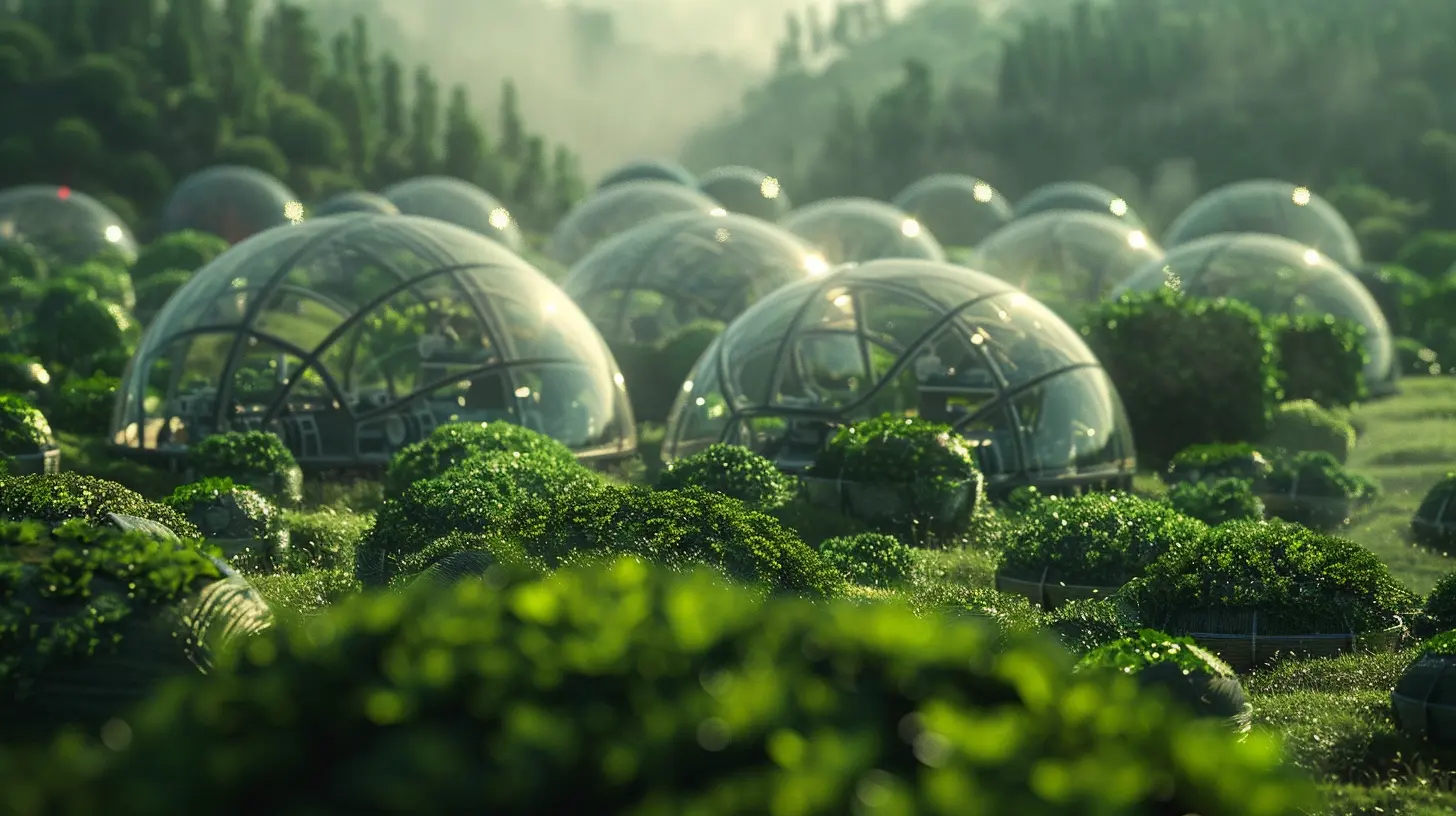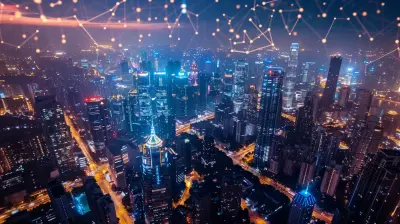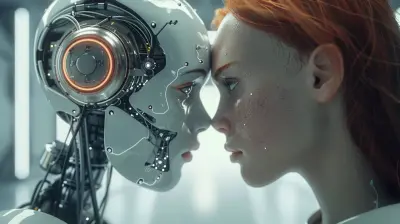How AI is Maximizing the Efficiency of Renewable Energy Farms
8 November 2025
Renewable energy has been making waves in the global push for sustainability. But let’s be real—wind turbines don’t always spin at full speed, and solar panels aren’t always soaking up the sun. That’s where Artificial Intelligence (AI) comes into play. AI is revolutionizing the way we harness and utilize renewable energy, making power grids smarter, reducing waste, and improving efficiency in ways we never thought possible.
In this article, we’ll dive into how AI is supercharging renewable energy farms and making clean energy more reliable, efficient, and cost-effective.

The Challenge with Renewable Energy
Renewable energy sources like wind and solar are fantastic for reducing our dependency on fossil fuels. But they come with a challenge—intermittency. The sun doesn’t shine 24/7, and the wind doesn’t always blow when we need it the most. This unpredictability makes it difficult to generate a consistent power supply.Traditional energy grids were built around fossil fuels, where energy generation could be adjusted based on demand. But with renewables, we don’t have that luxury. Energy storage and distribution must be optimized to prevent waste and ensure stable electricity supply. Enter AI—the game changer in optimizing renewable energy farms.
How AI is Transforming Renewable Energy Farms
AI is revolutionizing the renewable energy sector in several ways. From predicting power generation to maintaining infrastructure, it plays a crucial role in improving efficiency. Let’s break down exactly how AI is making renewable energy farms smarter and more reliable.1. Predicting Energy Production with Machine Learning
AI-powered machine learning algorithms can analyze historical weather data, cloud movements, and wind patterns to predict energy generation with astonishing accuracy. By forecasting when solar panels and wind turbines will be most effective, energy farms can plan ahead and adjust power distribution accordingly.Imagine knowing a week in advance how much solar energy you'll generate—this allows for better integration with power grids, reducing energy waste and ensuring storage systems are used efficiently.
2. Smart Grid Optimization
Traditional power grids weren’t designed for renewable energy, but AI is helping to modernize them into smart grids. Smart grids use AI to balance supply and demand efficiently, directing power where it’s needed the most.AI can analyze real-time energy consumption and adjust energy distribution accordingly. Instead of wasting excess solar power when demand is low, AI can redirect that energy into storage or other parts of the grid where demand is higher.
3. AI-Driven Energy Storage Management
One of the biggest hurdles with renewable energy is storage. When there's excess power, it needs to be stored efficiently for later use. AI manages this by predicting optimal charging and discharging times of batteries, maximizing their lifespan and efficiency.For example, Tesla's Powerwall, a battery system for homes and businesses, leverages AI to determine the best times to store and release energy based on real-time grid demand and weather patterns.
4. Predictive Maintenance for Wind and Solar Farms
Damaged solar panels or malfunctioning wind turbines can cripple energy production. Instead of waiting for something to break, AI-powered predictive maintenance analyzes performance data in real-time, identifying potential issues before they become serious.Think of it like a check-engine light for renewable energy farms—AI identifies small performance drops, so technicians can fix problems before they lead to costly downtime.
5. Enhancing Energy Efficiency with AI-powered Automation
AI isn't just about making predictions—it also automates processes to improve efficiency. For example:- AI-powered drones inspect large solar farms for faulty cells or dirt buildup, ensuring maximum energy absorption.
- AI-driven wind turbines adjust their blade angles automatically for optimal wind capture.
- Smart inverters use AI to regulate voltage fluctuations and prevent energy loss.
By automating these processes, AI ensures that every watt of energy is used as efficiently as possible.
Real-Life Examples of AI in Renewable Energy
AI isn’t just a futuristic concept—it’s already powering some of the world’s largest renewable energy projects. Let’s look at some real-world applications.Google’s AI-Powered Wind Farms
Google and DeepMind developed an AI system that predicts wind power output 36 hours in advance, allowing for better energy planning. This AI-driven approach increased the value of wind energy by roughly 20%.IBM’s AI-Powered Weather Forecasting
IBM’s Watson AI is being used to analyze weather patterns and optimize renewable energy production. This helps energy companies efficiently manage power supply and demand.Tesla’s AI-Managed Energy Storage
Tesla’s AI-driven battery storage systems are helping to stabilize power grids by efficiently managing clean energy storage and deployment. One example is South Australia’s Hornsdale Power Reserve, which uses AI to dynamically distribute stored energy to the grid.
The Future of AI in Renewable Energy
We’re just scratching the surface of what AI can do for renewable energy. In the future, AI could:- Enhance blockchain-powered smart contracts for energy trading, allowing individuals to sell excess solar energy directly to others.
- Develop fully autonomous renewable energy farms, where AI manages everything from power generation to grid distribution.
- Optimize hybrid energy systems, combining solar, wind, and hydro power for maximum efficiency.
As AI continues to evolve, renewable energy farms will become more intelligent, self-sufficient, and reliable—bringing us closer to a cleaner, more sustainable future.
Final Thoughts
AI is revolutionizing renewable energy by optimizing energy production, storage, and distribution. Machine learning, smart grids, predictive maintenance, and automation are supercharging efficiency, helping us overcome renewable energy’s biggest challenges.The transition to clean energy isn’t just a dream anymore—it’s happening right now, and AI is leading the charge. With continued advancements, AI-powered renewable farms will play a massive role in shaping a greener, more sustainable world.
One thing is clear: AI isn’t just making renewable energy viable—it’s making it unstoppable.
all images in this post were generated using AI tools
Category:
Environmental TechAuthor:

Jerry Graham
Discussion
rate this article
1 comments
Elsinore Fletcher
Ah yes, because nothing screams 'clean energy' like letting robots take the wheel! Who knew solar panels needed a personal assistant? Let’s just hope AI doesn’t decide that solar farms need a spa day too. Efficiency and relaxation, the ultimate power couple! Can’t wait for my wind turbine to start meditating!
November 9, 2025 at 5:30 AM

Jerry Graham
Haha, I appreciate the humor! While AI won't be scheduling spa days, it does play a crucial role in optimizing energy production and efficiency.


